Bukubuk, Red silkwood tree
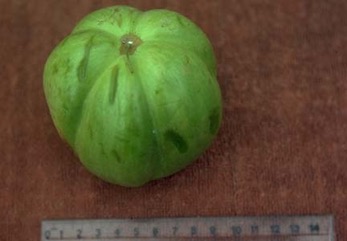
A tropical plant. Trees grow wild in coastal areas of Papua New Guinea. They are also planted. It usually grows from sea level to 500 m above sea level. It will probably grow up to about 1100 metres altitude. It occurs in Papua New Guinea, the Solomon Islands and Vanuatu. It has been introduced to Fiji.
Also known as:
Chovuku, Duldule, Gona, Gono, Hovaka, Koko, Kona, Nasu, Natu, Noneu, Nyinou, Nyiu, Pohon natu, Pohon sawo seberang, Sawo seberang, Wanet
Synonyms
- Bassia erskineana F. Muell.
- Bassia hollrungii K. Sch.
- Bassia obovata Forst.
- Burckella erskineana (F. Muell.) Pierre
- Burckella hollrungii (K. Sch.) Pierre
- Burckella kajewskii (Guill.) H.J. Lam.
- Illipe cocco Engler
- Illipe erskineana F.v.M
- Illipe hollrungii K. Sch.
- Illipe mentzelii (K. Sch.) Krause
- Lucuma cocco F. Muell.
- Payena mantzelii K. Sch.
- and others
Edible Portion
- Fruit
Where does Bukubuk grow?
Found in: Asia, Australia, Bougainville, Fiji, Indonesia, Pacific, Papua New Guinea, PNG, SE Asia, Solomon Islands, Vanuatu
Notes: Bukubuk Burckella obovata What is a Bukubuk like ? A bukubuk fruit is a soft green fruit up to 15 cm across. The outside of the fruit has five or so large fleshy lobes. Inside there is a hard pointed seed. The flesh of the fruit is white. It has a texture and taste something like cantaloupe. The fruit grows on a large tree which can be 36 metres high and have a trunk 2 m through. The tree often has buttresses. The branches have lots of twigs on them and the leaves aren often crowded at the tips of these small branches. The leaves are simple, produced one after another alternatively along the branch, and they are shiny. A white sticky sap is produced from the broken ends of twigs and leaves. The flowers are in groups just back from the ends of the twigs. The flowers are small and white. They have 4 sepals and a corolla with 8 lobes. Where do bukubuk’s grow ? They are truly tropical trees which mostly grow in the lowland rainforest. They occur as occasional trees scattered through the rainforest, and are also planted. These fruit trees occur on islands such as Manus, New Britain and North Solomons, and also in other South Pacific countries such as Vanuatu. How did it get its name? The name Bukubuk is a Tolai word used by the people of the Gazelle Peninsula at Rabaul. As the fruit are sold in the Rabaul market, this name is also known by a number of other people. Bukubuk means lumpy, because the fruit has bumps on it. The fruit also grows in other areas of PNG and has other Tok ples names. Scientists have given it a Latin name Burckella obovata. This is the same in all languages of the world. It belongs to a family of plants called Sapotaceae. These plants have milky sap in them. Tok Ples names Papua New Guinea Province Language Tok ples name Manus Nanat New Ireland Natu New Britain Kuanua Bukubuk North Solomons Solomon Islands Malaita Guadalcanal New Georgia
Status: In Papua New Guinea, it is a popular fruit in the Gazelle and occurs in a number of coastal islands
Growing Bukubuk, Red silkwood tree
Cultivation: Trees are grown from seed. There is normally only one fertile seed in each fruit. Both domesticated and wild trees occur. Trees grow wild in coastal areas. They are also planted.
Edible Uses: The fruit is eaten raw. Occasionally the fruit is baked.
Production: Fruiting is not seasonal although two main seasons may occur in a year. Fruit bruises easily so is hard to transport. It needs to be stored in soft containers lined with leaves or packaging. To avoid fruit damage, fruit are often harvested while not quite ripe. It can be stored for a short time if baked and is also stored in pits where it is fermented.
Nutrition Info
per 100g edible portion| Edible Part | Energy (kcal) | Protein (g) | Iron (mg) | Vitamin A (ug) | Vitamin c (mg) | Zinc (mg) | % Water |
|---|---|---|---|---|---|---|---|
| Fruit | - | - | - | - | - | - |
Bukubuk, Red silkwood tree Photos

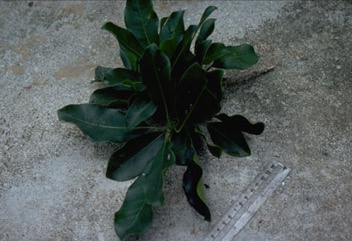
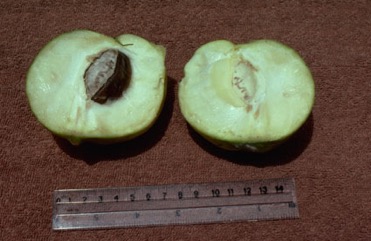
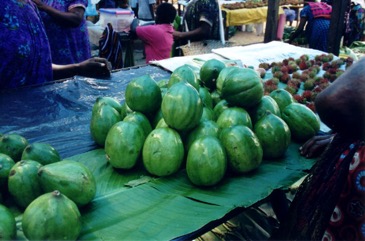
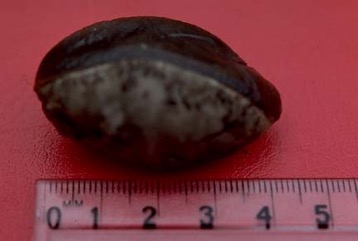
References
References Bukubuk
Altschul, S.V.R., 1973, Drugs and Foods from Little-known Plants. Notes in Harvard University Herbaria. Harvard Univ. Press. Massachusetts. no. 3236, 3237 (Madhuca obovata and Burckella cocco)
Baehni, 1938, Candollea 7:424
Cabalion, P. and Morat, P., 1983, Introduction le vegetation, la flore et aux noms vernaculaires de l'ile de Pentcoste (Vanuatu), In: Journal d'agriculture traditionnelle et de botanique appliquee JATBA Vol. 30, 3-4
Foreman, D.B.,1971, Checklist of Vascular Plants of Bougainville. Biol Bul 5. Dept Forests PNG p78.
French, B.R., 1986, Food Plants of Papua New Guinea, A Compendium. Asia Pacific Science Foundation p 208
French, B.R., 2010, Food Plants of Solomon Islands. A Compendium. Food Plants International Inc. p 206
Gowers,S.,1976, Some Common Trees of the New Hebrides and their vernacular names. Forestry Section, Dept of Ag., Port Vila, New Hebrides.
Gillaumin, R., 1954, Les Plantes utiles des Nouvelles-Hebrides (fin et complement) In: Journal d'agriculture tropicale et de botanique appliquee Vol. 1, No. 10-12 pp 453-460 (As Bassia obovata)
Henderson, C.P. and I.R.Hancock, 1988, A Guide to the Useful Plants of the Solomon Islands. Res. Dept. Min of Ag. & Lands. Honiara, Solomon Islands. p 54
Lam, 1942, Wild Pacific Sapotaceae. Blumea 6(1):1-46.
Lam,H.J. & P Van Royen, 1952, Burckella. Pierre. Blumea VI :580-593
Lebot, V. & Sam, C., Green desert or ‘all you can eat’? How diverse and edible was the flora of Vanuatu before human introductions?. Terra australis 52
Lepofsky, D., 1992, Arboriculture in the Mussau Islands, Bismarck Archipelago. Economic Botany, Vol 46, No. 2, pp. 192-211
May, R.J., 1984, Kaikai Aniani. A Guide to Bush Foods Markets and Culinary Arts of Papua New Guinea. Robert Brown and Associates. p 77
McClatchey, W. C., 2012, Wild food plants of Remote Oceania. Acta Societatis Botanicorum Poloniae 81(4) 371-380
Peekel, P.G., 1984, (Translation E.E.Henty), Flora of the Bismarck Archipelago for Naturalists, Division of Botany, Lae, PNG. p 431, 430
Smith, A.C., 1981, Flora Vitiensis Nova: A New flora of Fiji, Hawai Botanical Gardens, USA Vol 2 p 771
Sukarya, D. G., (Ed.) 2013, 3,500 Plant Species of the Botanic Gardens of Indonesia. LIPI p 166
Verheij, E. W. M. and Coronel, R.E., (Eds.), 1991, Plant Resources of South-East Asia. PROSEA No 2. Edible fruits and nuts. Pudoc Wageningen. p 320
Walker, 1948, Forests of Brit. Sol. Isl. Prot. 169
Walter, A. & Sam C., 2002, Fruits of Oceania. ACIAR Monograph No. 85. Canberra. p 123
White, 1950, Plants from the Solomon Islands. Journ. Arnold Arbor. , p104.
World Checklist of Useful Plant Species 2020. Royal Botanic Gardens, Kew
Yen, D. E.,1974, Arboriculture in the Subsistence of Santa Cruz, Solomon Islands. Economic Botany, 28:247-281